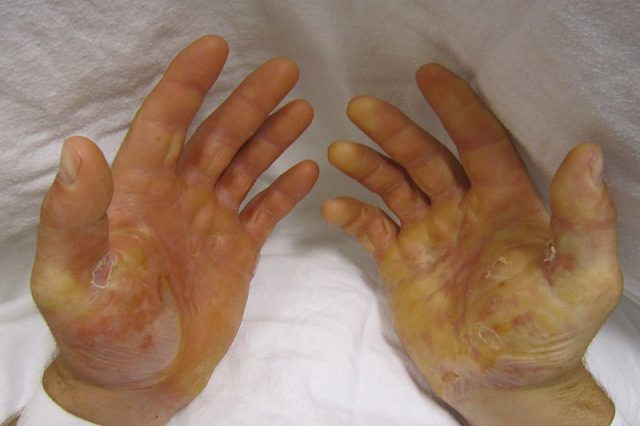
Scientists from the University of the Philippines Diliman (UPD) have been investigating the rare but deadly skin disease named “Butterfly Disease”, scientifically known as epidermolysis bullosa (EB), to pave a path for potential treatment.
What began as research about how integrins function in cancer turned into a study of how integrins are affected in the Butterfly Disease.
The National Cancer Institute defined integrins as a type of protein found on the surface of cells, which allows cells to attach and communicate to other cells and molecules.
“The main goal of the research has previously been looking at the function of integrins and their roles in cancer. Interestingly though, we’ve found that integrins may be associated with many other relevant diseases,” molecular biologist Neil Andrew Bascos said.
What is “Butterfly Disease”?
The skin disease is characterized by blister formation and thin, fragile skin from mild trauma or friction. Sometimes, it just suddenly appears. Among its effects, according to Healthline Media, are:
- Thick skin on the palms of your hands or soles of your feet, rough or thick fingernails or toenails,
- Changes in skin color or tone, scarring and tightening of the skin
- Blisters inside your mouth,
- Scarring or tightening of other tissues inside your body
Currently incurable, EB is known to affect about 500,000 people worldwide, EB Research Network said.
Also a genetic condition, the skin disease can manifest during early infancy. The blisters are usually observed in mucocutaneous membranes such as mouth, gut and corneal surface linings. These are parts of the body where the skin meets the membrane of different organs, the network said.
With the varying severity of the disease, EB is classified into four major groups depending on how deep the blisters surface within the skin. Most common is the EB simplex with about 70 percent of EB cases. This can be distinguished by blisters that occur in the epidermis, or the outermost layer of the skin.
Following the EB simplex is the Dystrophic EB with approximately 20 percent of EB cases. While the simplex can be observed on the epidermis, the dystrophic can be found in the dermis just right below the outermost layer.
Taking up about 10 percent of all EB cases is the Junctional EB (JEB), one of the rare classifications of the Butterfly Disease that causes severe blistering in the basement membrane of skin. It is what connects the epidermis and dermis, therefore harming more layers of the skin.
Other observed effects of JEB are: death in early infancy, chronic ulceration, nail dystrophy, scarring and alopecia.
The rarest of all classifications, however, is the Kindler syndrome that is said to cause skin to become photosensitive or extremely sensitive to sunlight.
A combination of wound care, medications and prevention is currently the existing treatment for EB.
What did UP find so far?
UPD scientists of the College of Science are working on understanding how a JEB gene mutation called G273D affects the body’s production of the integrin ITGA6-ITGB4 (A6B4), also known as a protein that combines cells and tissues to make organs such as the skin.
They found that the genetic mutation induces the production of a malfunctioning A6B4, weakening the adhesion of cells in the skin tissue, causing severe skin blisters.
“Finding its involvement in this disfiguring disease provides us a means through which our research may be able to help the afflicted people,” Bascos said.
Recognizing the predictiveness of their study, Basco said current studies have provided them with “concrete targets” to test.
One of the most recent cases in the Philippines of EB was in 2019 where a one-year-old female infant already showed symptoms of the skin disease. She had red bumps and blisters that spread all throughout her body.
Doctors from the Skin and Cancer Foundation and Philippine General Hospital found no signs of potential trauma or viral infection, highlighting the disease as hereditary.
The team of scientists look towards the possibility of altering this effect of the genetic mutation G237D to the integrin A6B4.
